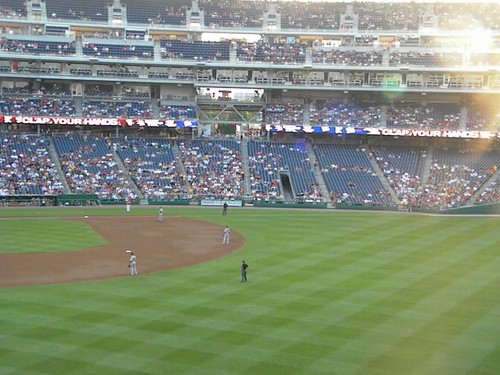First base
This is the most important one. Outs are baseball's currency, so getting on first any way you can goes a long way toward your team's success (as Billy Beane's A's famously exploited). Reaching first base prolongs the inning, tires out the pitcher, potentially allows earlier runners to advance, and represents a potential run based on how the following batters fare.
However, the team still has a long way to go to cash in the runner, needing either a well-placed extra-base hit or two or more of a single, a walk, a stolen base, a passed ball, or a wild pitch. Additionally, the runner is in constant jeopardy of being part of a double play on a ground ball.
Second base
Second base is squarely in scoring position, where most singles will score the runner.
A team with a runner on second and no outs can attempt to play small ball: sacrificing most of their potential for the inning in exchange for a reasonable shot of scoring a single run. This is accomplished by bunting, hitting ground balls behind the runner, or hitting sacrifice flies.
The runner is no longer much of a threat to be doubled off, aside from force outs at third, line-drive outs, or base-running blunders.
Second base's position on the field affects many things: It's the closest base to the outfielders who are returning batted balls to the infield. It's the hardest base to advance to on a fly ball (runners usually err on the side of returning to first on fly balls). It's the easiest to steal, given that the catcher has to throw roughly 127 feet, as opposed to 90 feet to the corner bases.
Getting there via the steal is a nice bonus, but you need to convert some huge percentage to make stealing a good strategy (I've discussed this in the past); the incremental base benefits the team much less than the cost of potentially turning a runner into an out.
Third base
There's an old baseball adage saying "Never make the first or third out at third base." The marginal benefit of third base over second is the smallest of any advancement.
Under the first scenario, a runner staying at second with no outs can often be converted into a run using small ball (as discussed above).
Under the second scenario, there aren't enough incremental ways to score from third with two outs over ways you would have still scored from second. Balls in play that could advance runners simply end the inning instead. However, there are a few extra ways to score from third, such as passed balls, wild pitches, or even stealing home.

